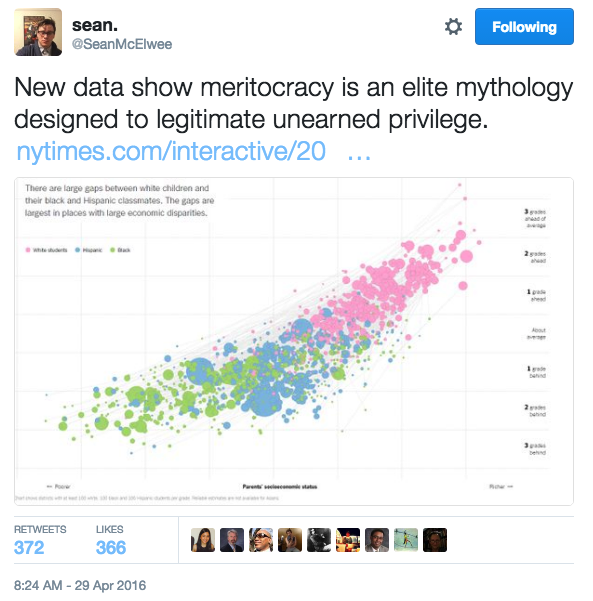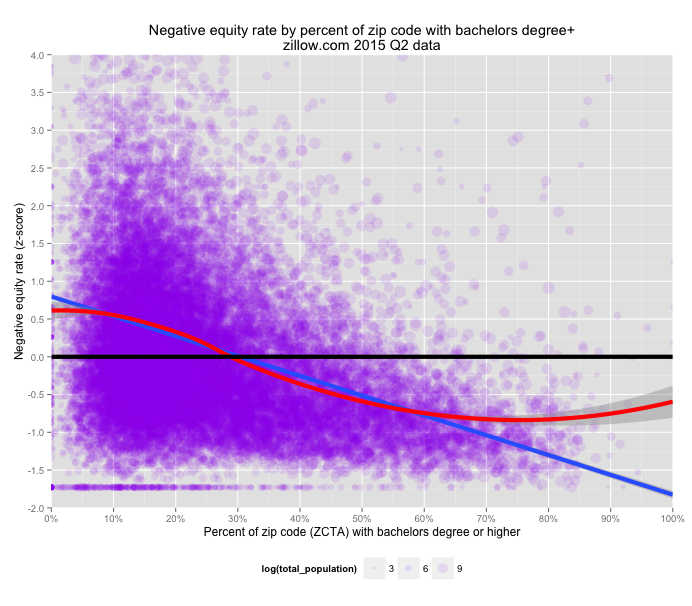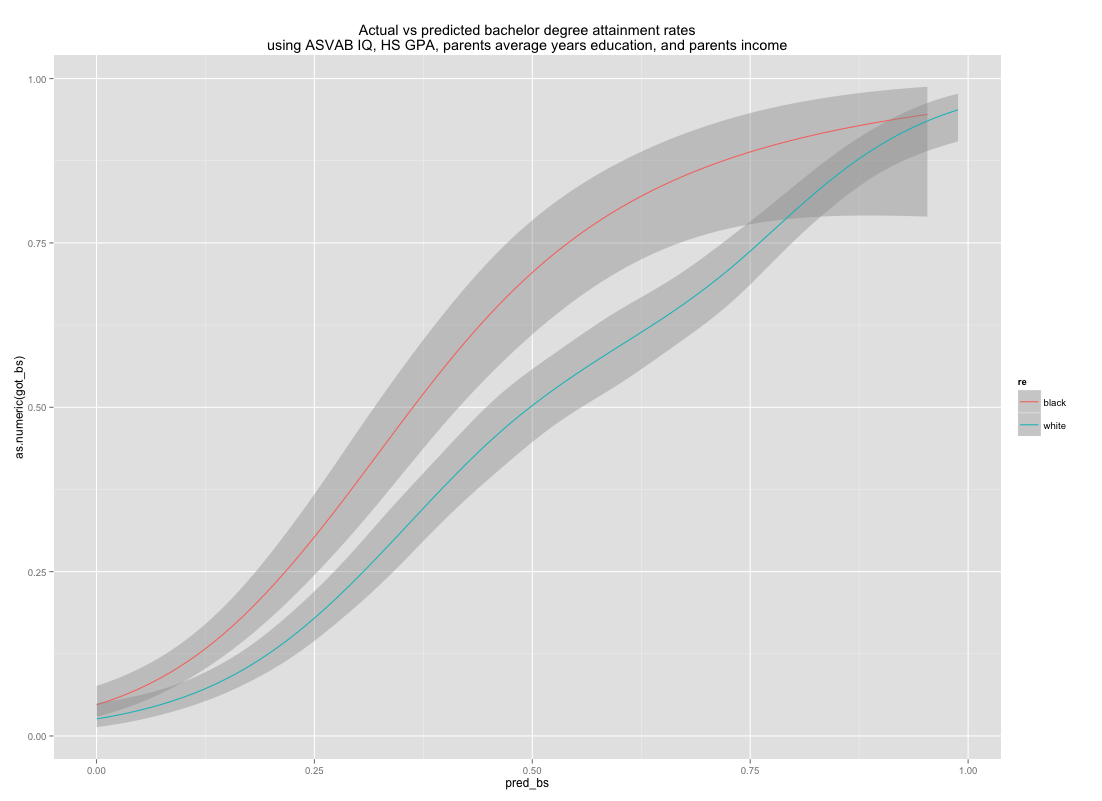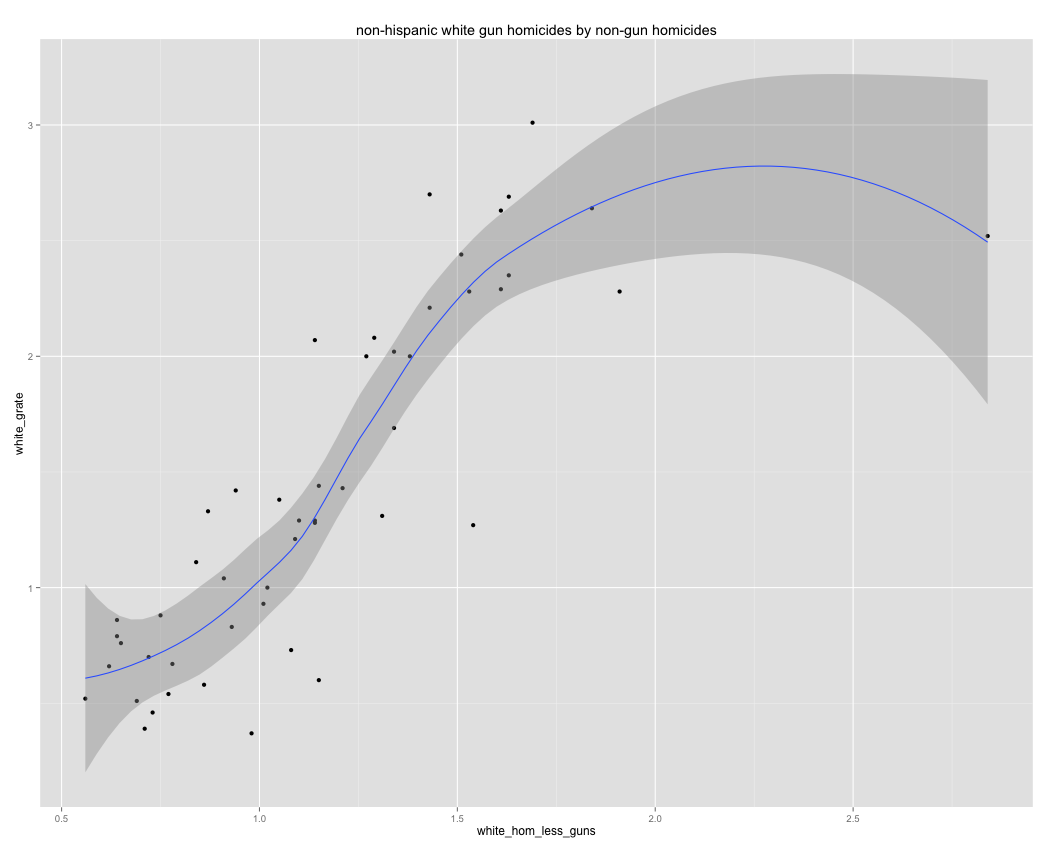On April 29th the New York Times posted a nominally data driven article on school districts, test scores, and socioeconomic status. Though it contained some useful data, the analysis was terribly misleading and it excluded a tremendous amount of pertinent information. Many progressives took the article as proof that the system is “rigged”.

The NYTimes did not help matters by conflating the measures of socioeconomic status (SES) with income. Although every one of their plots used a composite SES measure on the x-axis, the article itself and various annotations give a strong impression that money/income/wealth are the primary drivers of this:

The words income, economic, wealth, money, rich, poor, and other related words were littered liberally throughout the article. Not a single mention was made of other predictors or even of the composition of the SES index they used, save for an easy to miss footnote at the end of the article.
The SES measure they used was defined in the SEDA archive as:
the first principal component factor score of the following measures: median income, percent with a bachelor’s degree or higher, poverty rate, SNAP rate, single mother headed household rate, and unemployment rate
[emphasis mine]
These non-economic dimensions actually exert significant influence on the correlations, are not directly tied to income/wealth/etc, and show marked racial/ethnic differences even at the same income level (e.g., single motherhood rates are much higher in the black community at any given level of income)
Rather than focus too much on what is wrong with this specific article (this sort of article is practically a genre unto itself these days), I will instead systematically address misperceptions here and attempt to shed more light on the nature and underlying causes of these patterns. I will argue that (1) these gaps are mostly genetic (2) they generally have little to do with systematic differences in parental economics (3) they have even less to do with the school systems themselves (4) these patterns are not unique to the US.
I will use some data from the Stanford Education Data Archive (SEDA), the same used by the NYTimes article, to help make some of my points but, unlike some of my other blog posts, I will try to cover each point in just enough depth to convey the gist of it (linking out for more in-depth analysis for those that are interested in the particular point). I will also bring together good deal of supporting evidence that is buried in different academic articles, government databases, think-tank research, and so on.























